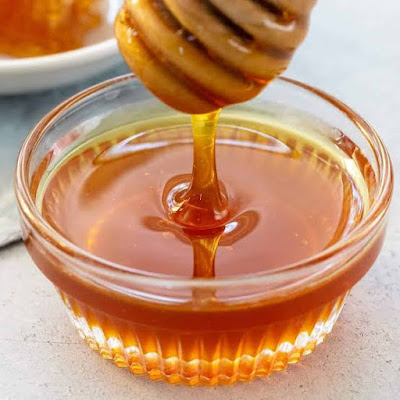Honey And Your Stomach: What They Never Told Us
Photo/Jessica Gavin
Honey is a natural sweet, viscous substance produced by honeybees. It is eaten as food, used as common sweetener and has been used for centuries for medicinal purposes.Stomach/intestine
Honey is reported to have effect of preventing and treating
gastrointestinal disorders such as peptic ulcers, gastritis, and gastroenteritis. Honey is a potent inhibitor of the causing agent of
peptic ulcers, gastritis and Helicobacter pylori.
Honey and Diabetics
Honey contains a good proportion sugars with: dextrose (31%), levulose (38%), and about 1.3% sucrose. Cane sugar yields, in effect after hydrolysis in the intestine), 52.5 percent of each sugar. On a weight basis, honey is approximately as sweet as granulated sugar; hence more sweetening power might be considered available to the
diabetic at a lower dextrose "price" from honey than from granulated sugar
Studies have shown that honey consistently produces a lower glycemic effect when compared to glucose and sucrose in normal
volunteers and type I diabetics, and that honey or sucrose at breakfast
do not have additional acute hyperglycemic effect over an isoglucidic
amount of bread in type II diabetics Compared to glucose and
sucrose, honey has lower glycemic and incremental indices in type I diabetic patients
Dental Hygiene
Honey is also recommended in dental hygiene.
The use of honey chewing-gum three times a day after meals significantly reduces plaque and the risk of gingivitis.
It also has therapeutic properties in the treatment of gingivitis and periodontal disorders. In a study on 10
cases of dental infections, the local use of natural honey in dental abscesses and chronic osteomyelitis proved to have antibacterial effects.
Energy Source
As food, honey is mainly composed of the simple sugars fructose and glucose, which form the basis of almost all indications on how, when and why to use it. The main consideration is the fact that honey provides immediately available calories, from which it derives its energy value.
Diabetes
There is a need for sweeteners in the diabetic diet to improve overall dietary compliance. Since fructose is
absorbed more slowly from the gastrointestinal tract than glucose and is rapidly taken up by the liver, blood sugar levels rise only minimally after fructose ingestion.
Respiratory tract infection
Honey has well-documented antimicrobial
and antifungal properties and is being used by physicians across the world for a wide variety of medical problems especially in the respiratory tract. Low pH, hydrogen peroxide generation, and the hyperosmolarity mechanisms of antimicrobial action are ubiquitous for all
honeys.
Wound healing properties
Honey is an effective treatment of wounds because it is non-irritating, non-toxic, self sterile, bactericidal, nutritive, easily applied and more comfortable than other dressings. The treatment of wounds with honey has rendered them bacteriologically sterile within 7-10 days of the start of the treatment and promoted healthy granulation of tissue.
Immune function
Honey’s antioxidant and antibacterial properties help improve the digestive system and boost immunity. It is also a powerhouse of antioxidants, which are very effective for the removal of free radicals from the body.
Hangovers
Fructose digests at the same rate as alcohol, so consuming a healthy dose of honey during a hangover forces your body to get rid of the alcohol in your system faster. It also helps your body recover from the hypoglycemia (aka low blood glucose) brought on by drinking.




Comments
Post a Comment